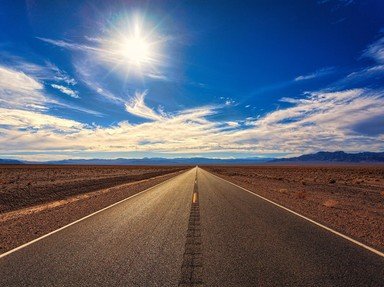Quiz Answer Key and Fun Facts
1. We begin our journey at "Shaar HaGay", as it is called in Hebrew, or "Baab Al Waad" in Arabic. What does this term mean in English?
2. Just a few kilometers past Shaar HaGay, you will notice a building on the right hand side of the road that houses a water-pumping station. The facade of the building is now a plain brown color, but what was on it prior to 1984?
3. As we begin our ascent in earnest, you will notice the shells of abandoned vehicles on the left hand side of the road. Why haven't these vehicles been removed?
4. We have now completed the steep drive that ends in a moshav called "Beit Meir", and the road has leveled off. As we continue for a few more kilometers, we approach Moshav Neve Shalom and pull into the gas station adjacent to the moshav. What incongruous monument do we find in this gas station?
5. A bit east of Neve Ilan, we can visit the Arab village of Abu Ghosh, which is actually an incorporated city. According to local legend, where did the residents of Abu Ghosh originally come from?
6. In the summer of 1995, a natural disaster wreaked considerable destruction on the area in which we are traveling. What type of disaster was it?
7. We now begin a steep descent into the Motza Valley. If we make this trip in February or March, what type of tree blossoms will fill the valley?
8. As we exit the valley and begin to climb again, we will pass Beit Zayit. What interesting formation can we view here?
9. We have almost completed our ascent! Shortly before we enter the city, a Byzantine tomb with a tower is visible in the east. According to legend, who is buried in this tomb?
10. We have now completed our journey of approximately thirty kilometers on a modern, divided highway. Does this highway follow the same route as the ancient road to Jerusalem?
Source: Author
janetgool
This quiz was reviewed by FunTrivia editor
Bruyere before going online.
Any errors found in FunTrivia content are routinely corrected through our feedback system.
